Investigation
Oklahoma’s Loophole: How Tyson’s Water Use Goes Unchecked
Food•15 min read
Perspective
Even when animal protections are strong, millions of sentient beings suffer. Clément Martz takes us to the heart of the problem, exposing conditions at "high welfare" facilities during COVID-19.
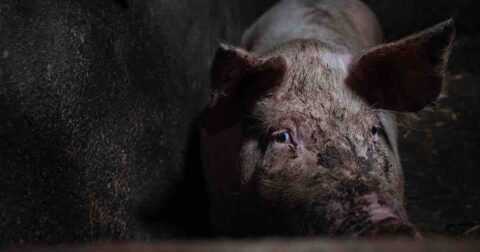

Words by Clément Martz
“Out of all the countries, why did you choose Sweden? We are one of the countries with the highest animal welfare standards in the world,” the police officer asked while I was being interrogated after photographing the conditions inside a pig farm. “Is keeping pigs indoors, unable to see the daylight, crowded in tight dirty stalls while standing in their own excrement until they are sent to slaughter at 6 months of age considered high welfare standards?” I replied.
In the last year, I have been to countless Swedish farms, documenting these so-called “high welfare standards” during the pandemic. What I have witnessed and documented shows me that the way these animals are being treated is an immediate concern. Their conditions are shocking and seeing them for myself was an urgent wake-up call.
COVID-19 has affected farmed animals across the globe. Although the virus has largely been transmitted between humans, animals raised for food have still felt the consequences. From animals being buried and burnt alive to slowed operations in slaughterhouses and worsening conditions in the West, millions of farmed animals are also victims of this pandemic.
In Sweden like most other countries in the world, factory-farmed animals are raised for food in confined and overcrowded conditions. According to the Swedish Board of Agriculture, Sweden has 63,000 farms and over 50 percent of Swedish farms have animal production. Each year, the country produces 2.6 million pigs, 100 million chickens, and 8 million egg-laying hens. Annually, 290,000 tonnes (over 319,600 US tons) of cow’s milk comes out of Swedish dairy farms. What do these production numbers mean for the animals being farmed?
The first time I entered a pig farm, it was dark, dusty, and smelled of pig excrement and ammonia—far from what advertisements would have you believe. They show pink little pigs playing outdoors. Instead, I have seen 10-16 pigs trapped inside small stalls with nothing to keep them active. As I walked through the farm I could see their eyes as I passed, carefully taking pictures of what I saw.
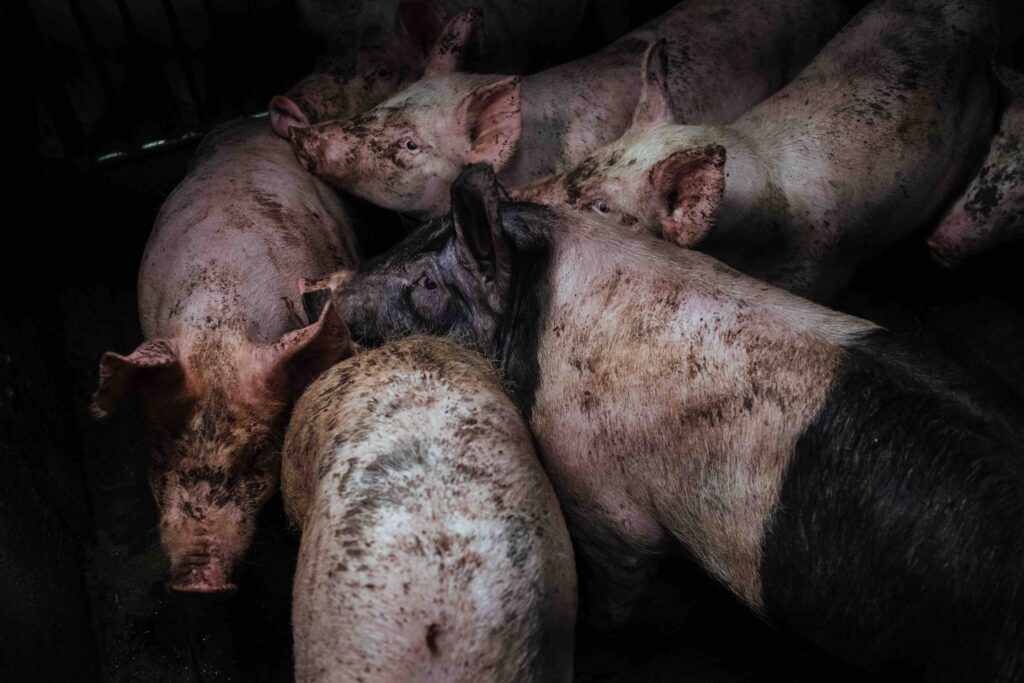
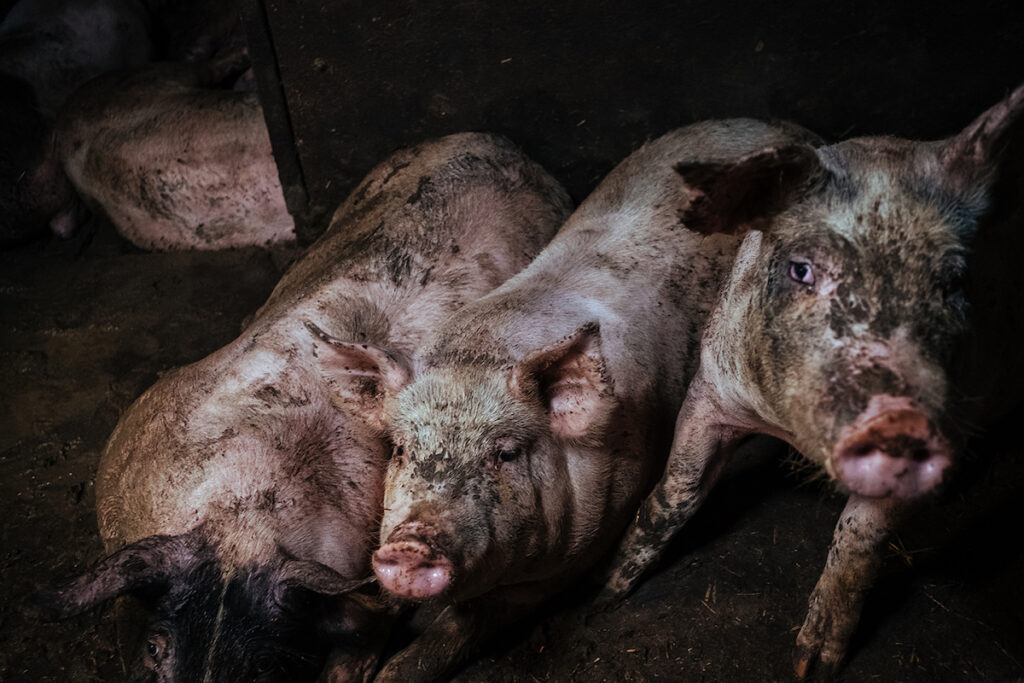
Although Swedish animal agribusiness proudly states its minimal use of antibiotics, I have frequently witnessed sick and injured animals in these conditions. For instance, many pigs bite each other due to overcrowded stalls and psychological distress. Wounds then get infected as the animals lay in their own excrement for days at a time. These infections are supposed to be treated with antibiotics.
Wounds and infections are the most common injuries. In fact, an internal report to the Swedish Animal Protection (Länsstyrelsen) was made by our team after noticing a young pig with a prolapse so big that the organ was falling out of his rectum. We found the pig unable to sit down as the entire organ was coming out of his body. He was left alone in a stall, only able to rest on his two front legs. The Swedish Animal Protection called the farmer who said that the animal was given antibiotics and kept separate from the other pigs.
In a country with some of the highest welfare standards in the world, this explanation was accepted and, as far as I know, the authority responsible for upholding animal protection did not visit the farm to check on the animal. Even in Sweden, animals have limited protection—and are kept in conditions where pandemics can develop.
This visit to a cage-free egg farm was my first investigation into the egg industry. More than 15,000 birds were kept in a large shed with no access to the outdoors. The artificial light, which is kept on continuously, stimulates the hens to produce as many eggs as possible.
As I walked through the farm with constant noise coming from thousands of hens, I saw one hen on the ground, slowly dying. Her neck hanging down, her eyes slowly closing, breathing heavily, she suddenly flipped over—shaking until her last breath. Witnessing the death of this hen, while she desperately tried to hold on to her life, proved to me that whether hens are raised cage-free or in cages, the unnatural environment in which farmed hens are raised is detrimental to their well-being.
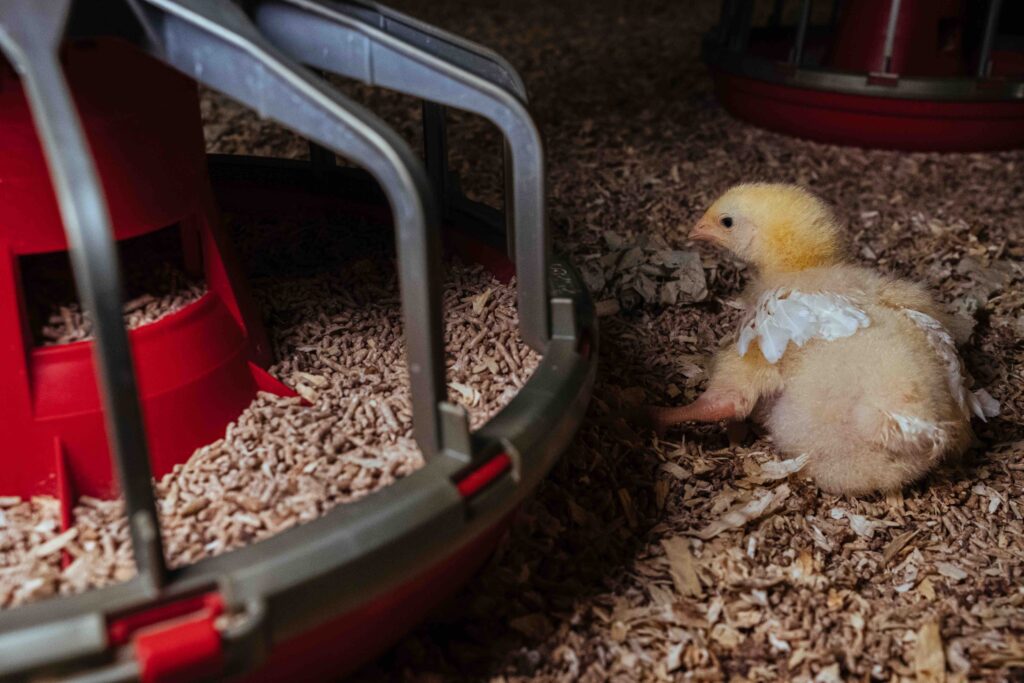
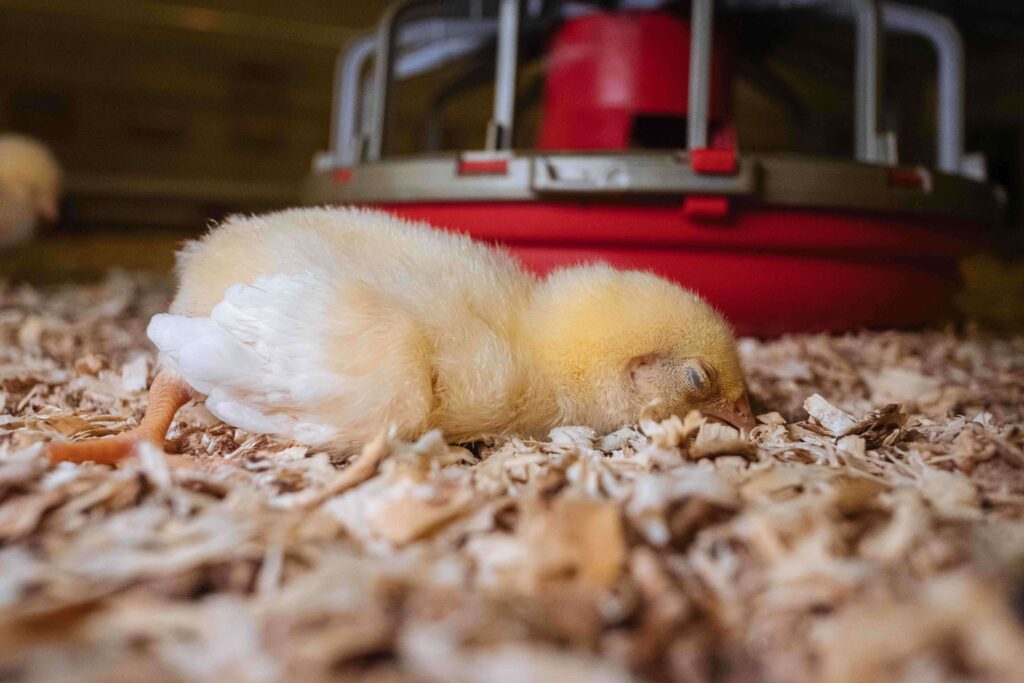
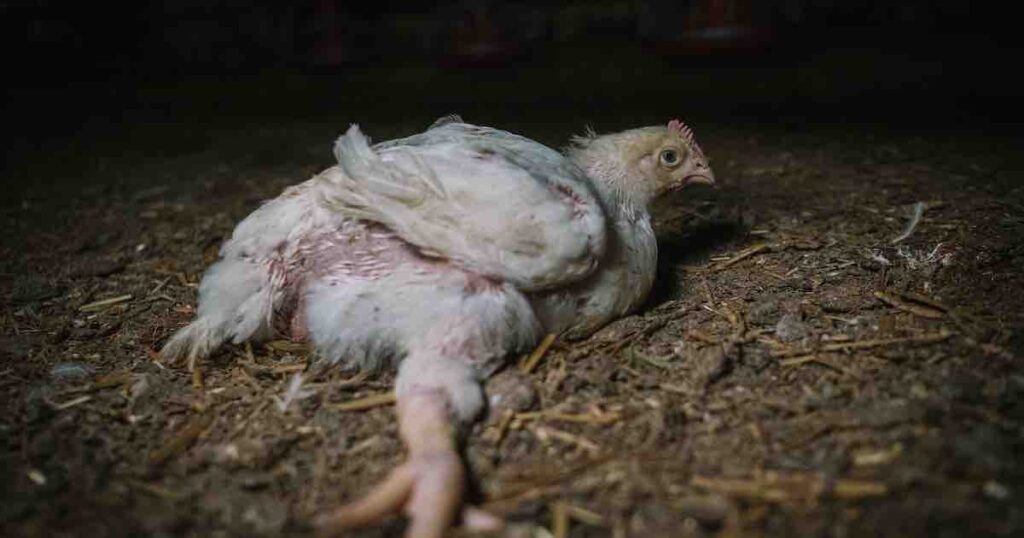
Broiler chickens, who are raised for meat, also face poor conditions and health issues. In Sweden, broiler chickens are only raised for 35 days before being sent to slaughter. Like the egg-laying hens, broiler chickens are constantly stimulated by artificial light and they are given rich feed to accelerate their growth. Baby chicks often suffer from the effects of rapid growth at just a few days old. I have witnessed baby chicks unable to stand on their own two legs while laying in their own excrement, some gasping for air while their lungs are slowly collapsing. For the ones who do not make it to slaughter, they are thrown in a bin outside the farm. These conditions are ideal breeding grounds for a future pandemic.
On each dairy farm I have been to, no matter how small the scale, calves were kept separated from their mothers. Many farms were filthy, and calves laid with no straw for comfort. One small dairy farm I visited was particularly bad. As I walked into the open barn and turned my head from left to right, about 70 calves were lying in their own feces. Their skin was covered with dry excrement, and many scratched at their bodies to get it off. Their water station was covered with feces as well.


From birth, the calves have limited access to the outdoors. All they know is this dirty environment. Surprisingly, this dairy farm only sells milk locally and was not to any major Swedish dairy companies.
Conducting investigative work, especially during the COVID-19 pandemic, has revealed to me how animals are mistreated inside farms. Of course, contaminating the animals is a huge concern. Although, the root of the issue is not so much potentially spreading COVID-19 or other zoonotic diseases, but rather the unsanitary environment in which so many animals are held to begin with.
Even with such “high animal welfare standards,” 1.3 million Swedish chickens were recently culled due to a bird flu outbreak. A Salmonella outbreak in the south of Sweden resulted in 5,000 culled pigs.
We are now faced with two problems. On one side, the animals are suffering in conditions in which none should be forced to live, and on another side, we are creating breeding grounds for future pandemics that could end up even more deadly than the one we’re currently facing. Perhaps it’s time to seriously consider the fact that factory farming is as much a health issue as it is a moral issue.